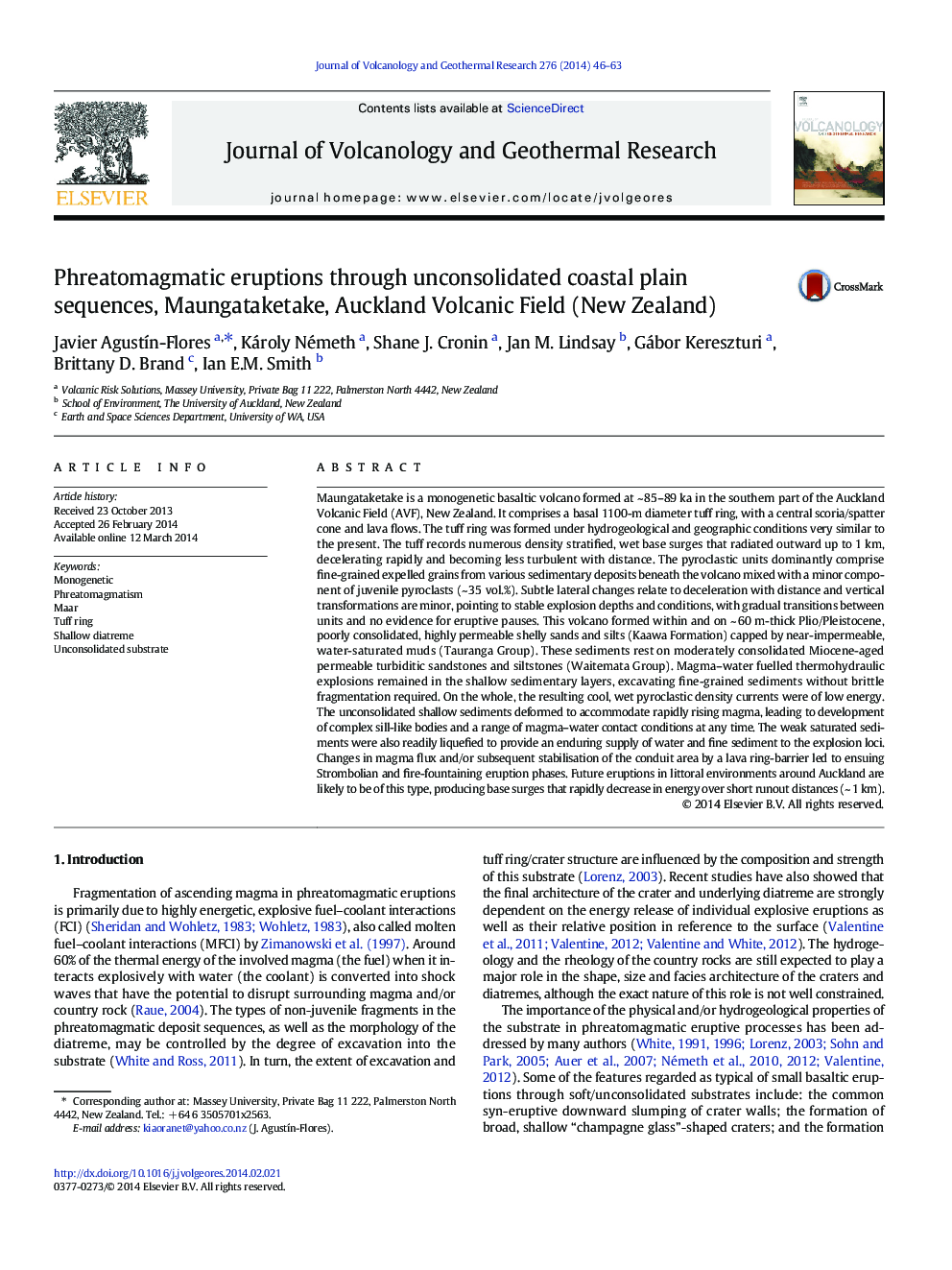| کد مقاله | کد نشریه | سال انتشار | مقاله انگلیسی | نسخه تمام متن |
|---|---|---|---|---|
| 6440058 | 1638345 | 2014 | 18 صفحه PDF | دانلود رایگان |
عنوان انگلیسی مقاله ISI
Phreatomagmatic eruptions through unconsolidated coastal plain sequences, Maungataketake, Auckland Volcanic Field (New Zealand)
دانلود مقاله + سفارش ترجمه
دانلود مقاله ISI انگلیسی
رایگان برای ایرانیان
موضوعات مرتبط
مهندسی و علوم پایه
علوم زمین و سیارات
ژئوشیمی و پترولوژی
پیش نمایش صفحه اول مقاله

چکیده انگلیسی
Maungataketake is a monogenetic basaltic volcano formed at ~Â 85-89Â ka in the southern part of the Auckland Volcanic Field (AVF), New Zealand. It comprises a basal 1100-m diameter tuff ring, with a central scoria/spatter cone and lava flows. The tuff ring was formed under hydrogeological and geographic conditions very similar to the present. The tuff records numerous density stratified, wet base surges that radiated outward up to 1Â km, decelerating rapidly and becoming less turbulent with distance. The pyroclastic units dominantly comprise fine-grained expelled grains from various sedimentary deposits beneath the volcano mixed with a minor component of juvenile pyroclasts (~Â 35Â vol.%). Subtle lateral changes relate to deceleration with distance and vertical transformations are minor, pointing to stable explosion depths and conditions, with gradual transitions between units and no evidence for eruptive pauses. This volcano formed within and on ~Â 60Â m-thick Plio/Pleistocene, poorly consolidated, highly permeable shelly sands and silts (Kaawa Formation) capped by near-impermeable, water-saturated muds (Tauranga Group). These sediments rest on moderately consolidated Miocene-aged permeable turbiditic sandstones and siltstones (Waitemata Group). Magma-water fuelled thermohydraulic explosions remained in the shallow sedimentary layers, excavating fine-grained sediments without brittle fragmentation required. On the whole, the resulting cool, wet pyroclastic density currents were of low energy. The unconsolidated shallow sediments deformed to accommodate rapidly rising magma, leading to development of complex sill-like bodies and a range of magma-water contact conditions at any time. The weak saturated sediments were also readily liquefied to provide an enduring supply of water and fine sediment to the explosion loci. Changes in magma flux and/or subsequent stabilisation of the conduit area by a lava ring-barrier led to ensuing Strombolian and fire-fountaining eruption phases. Future eruptions in littoral environments around Auckland are likely to be of this type, producing base surges that rapidly decrease in energy over short runout distances (~Â 1Â km).
ناشر
Database: Elsevier - ScienceDirect (ساینس دایرکت)
Journal: Journal of Volcanology and Geothermal Research - Volume 276, 15 April 2014, Pages 46-63
Journal: Journal of Volcanology and Geothermal Research - Volume 276, 15 April 2014, Pages 46-63
نویسندگان
Javier AgustÃn-Flores, Károly Németh, Shane J. Cronin, Jan M. Lindsay, Gábor Kereszturi, Brittany D. Brand, Ian E.M. Smith,